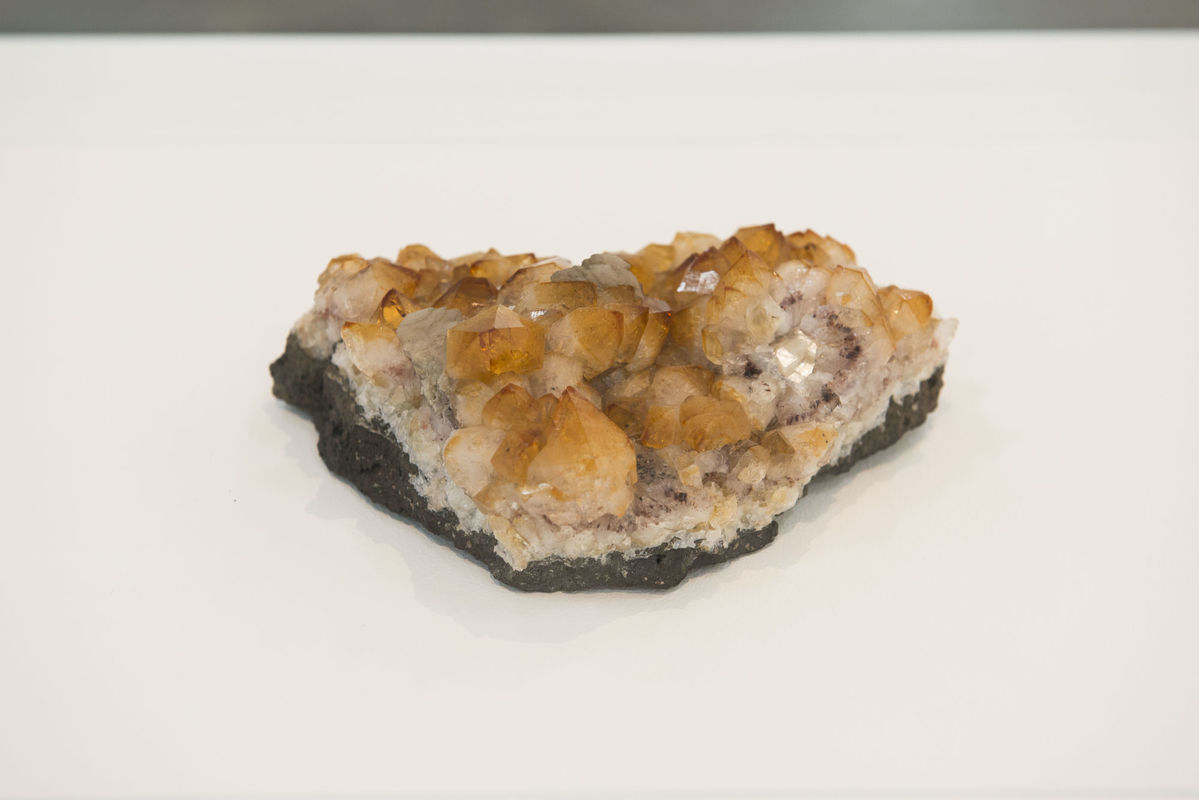Artists
On the night of September 2, 2018, a fire engulfed the National Museum’s headquarters in Quinta da Boa Vista in Rio de Janeiro and destroyed almost all of its historical and scientific collections. About twenty million items collected over two hundred years turned into ashes. Working tirelessly through the rubble, the museum’s rescue team spent the next few months identifying and cataloging pieces that, in different ways, had gone through the fire. Three of them are displayed here, at the beginning of a Bienal that wants to speak, among other things, about the value and importance of resisting, of moving forward incorporating transformation as an integral part of living and reconstruction as a task of critical reinvention. It is an intentionally reduced group of items as their role is essentially metonymic: these pieces are parts which represent a whole, including other pieces that, for many reasons, could not be exhibited here.
The first of these objects is a stone that changed from amethyst (violet variety of quartz) to citrine (yellow variety of quartz) with the fire’s heat. This change in the mineral’s structure is evidence that the temperature in the museum must have been around 450°C for several hours. By indelibly absorbing the heat, the stone became a clue, and its color a witness to what happened. It has been transformed, yet it is the same stone. It remains the same because it knew how to transform itself.
The second object is a ritxòkò, donated by Kaimote Kamayurá, from the Karajá de Hawaló village, on Bananal Island, Tocantins, to help rebuild the collection. Symbolically, it replaces a doll lost in the fire, emphasizing how much the meaning of some objects transcends their presence and even their physical existence. If museums are in charge of preserving objects that tell the story of forgotten or decimated traditions, a living community, on the contrary, preserves the objects’ uses, manufacturing processes, and the stories and songs that give them meaning. Offering a contemporary piece to the museum, Kaimote Kamayurá acts as a representative of an original people who decide to actively contribute to the reconstruction of the National Museum’s collection, implicitly criticizing the colonialist practice of subjugating the knowledge of one people to another.
The last of these objects, Santa Luzia, is the second-largest meteorite found in Brazil, discovered in 1921 in Santa Luzia (currently Luziânia), Goiás. Fragments of asteroids, comets, or planets, when entering the Earth’s atmosphere, reach temperatures above 1,000°C, sufficient, in many cases, to completely consume them. The fragments that survive, called meteorites, bring to our planet the memory of a journey through hardly conceivable times and spaces. Tempered by its passage through the atmosphere, the Santa Luzia emerged completely unscathed from the National Museum’s ruins.
![Meteorito Santa Luzia, encontrado em 1921 [Santa Luzia Meteorite, found 1921]. Goiás, Brazil. Coleção [collection]: Setor de Meteorítica – Museu Nacional / Universidade Federal do Rio de Janeiro](http://imgs.fbsp.org.br/files/bfafb453502c970e37a1a2245711ee1b.jpeg)


